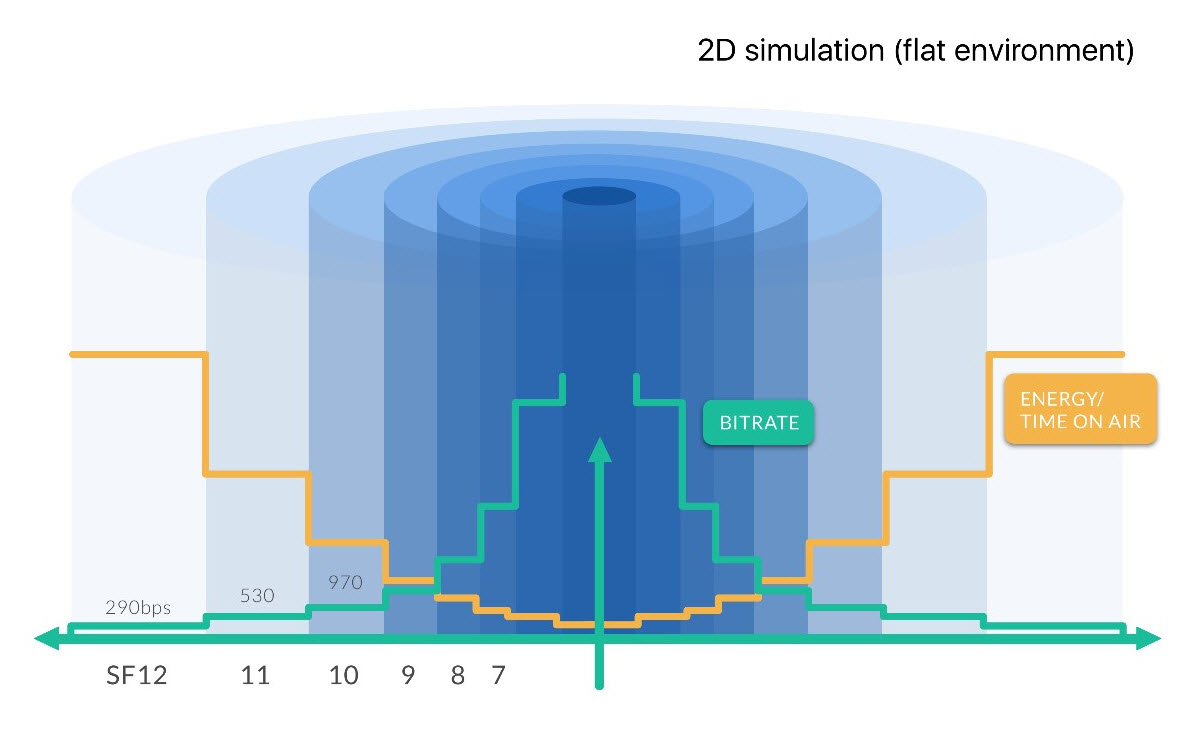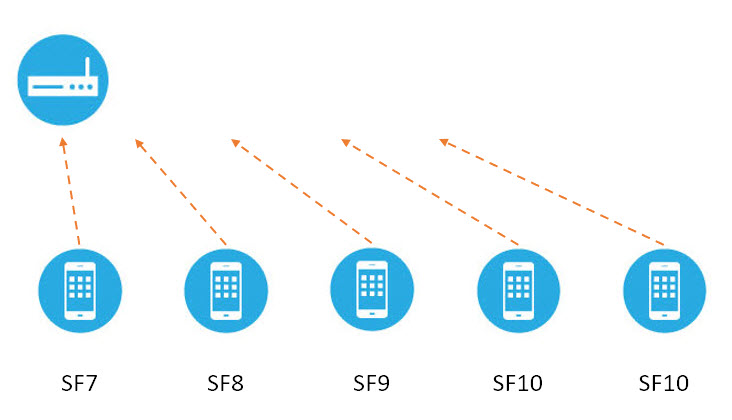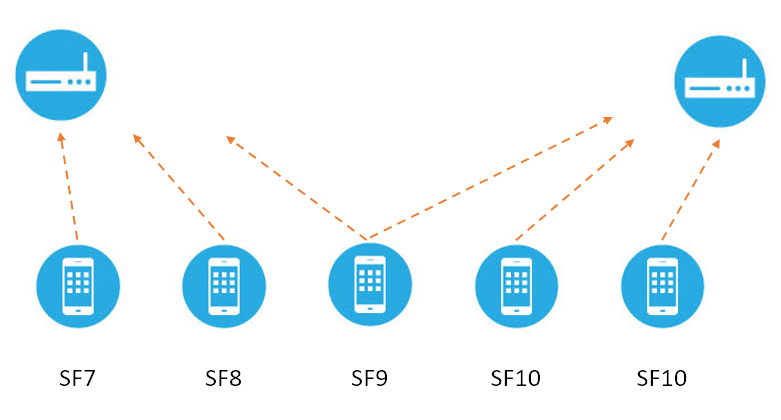Spreading Factors, Airtime, and Adaptive Data Rate
Watch the following video, which lays the groundwork for this topic, and then read on for more information.

(Time: 4:30 minutes)
A key feature of LoRaWAN is the capability of the network to automatically optimize the speed in which the devices send their data. This functionality is called Adaptive Data Rate (or ADR) and it essentially increases the capacity of LoRaWAN networks. ADR allows us to easily scale the network, simply by adding an extra gateway, a lot of nodes will automatically change their Spreading Factor (SF), resulting in less time on air per device, which adds more capacity to the network.
ADR is a very simple mechanism that changes the data rate based on simple rules: if the strength of the radio signal (called the link margin) is high, the data rate can be increased; if the link margin is low, the data rate can be lowered. It tailors the node’s data rate to the available link budget.
So how does this work, and where is the decision made?
The end device sends a message up through the gateway. The Network Server, which received the data, selects the ideal data rate based on the received signals strength. The data rate the node should use is sent via a downlink to the device.
In practice, this means that the
devices that are located close to the gateway use a high data rate resulting in
less time-on-air. For more distant nodes, the data rate is lower. Because the
highest energy activity a node will typically engage in is the act of data
transmission, this radically reduces the energy consumption of many devices.

ADR: Distance and Transmission Data Rates Displayed in a 2D Environment
Let’s look at ADR in action from a network perspective. Here, we see a single gateway, communicating with a range of devices in diverse applications. We can see that ADR has already been in operation and the end devices have all had their rates adjusted.

ADR: Single Gateway with Multiple Nodes
When
GW2 is added to the network, it will evaluate the data rates of the devices for
a while and instruct the nodes at some point to adjust their Spreading Factors.
This might result that GW1 will not receive all messages of all nodes anymore,
giving it more capacity for other devices nearby to be connected.

ADR: Introduction of a Second Gateway
If GW1 is removed at some point, the devices will automatically decrease their data rate to the point where GW2 will pick up the data packages again.
Do Not Use ADR with Mobile Devices
Mobile devices cannot use ADR. Imagine a car-tracking application. Even by the time an ADR command reached the node, the propagation environment would have changed so radically that the data rate attributed would be invalid. This can simply be disabled.
For moving devices, we can use Blind ADR (or Application-Driven ADR). Blind ADR refers to the method where the application defines several data rates, used over time. For example, a bike tracking application that sends 1 uplink using SF7 every 30 minutes, 1 uplink at SF10 every 6 hours and 1 uplink at SF12 every day.
Downlink Restrictions
One important thing to keep in mind is that a LoRaWAN network can support far fewer downlinks from the gateway to the node compared with uplinks from the node to the gateway. This is for two reasons:
It is not possible to receive uplink messages when transmitting downlinks due to the existing spectral allocation in the ISM bands and the state of the art in terms of duplexers. This is true for LoRaWAN as for any technology in the ISM band. It may change in the future when more bands are allocated, allowing for a true FDD (Frequency Division Duplex) system.
A gateway also has to adhere to duty cycle limits. In Europe, gateways are only allowed to send data 10% of the time. Each hour it is only able to use 6 minutes of airtime.